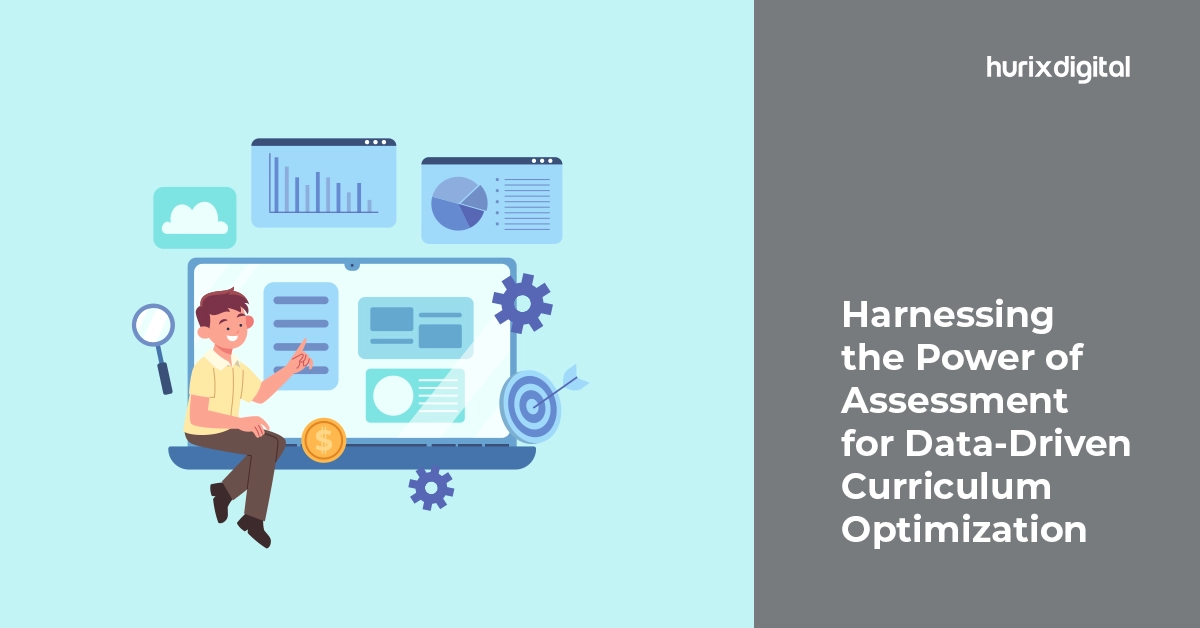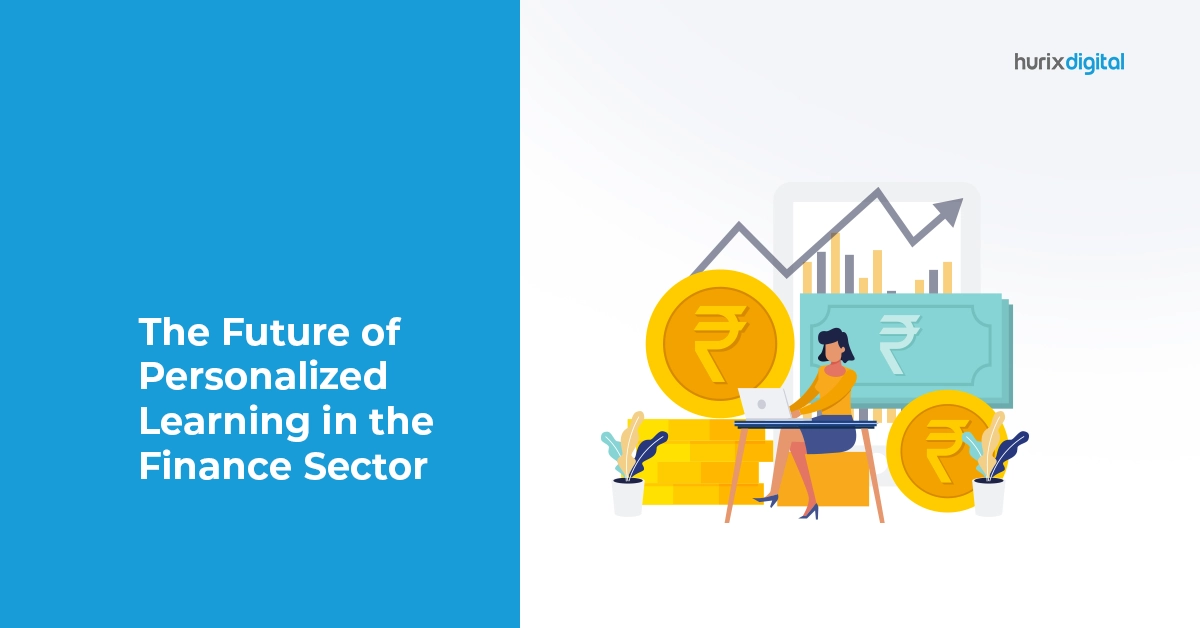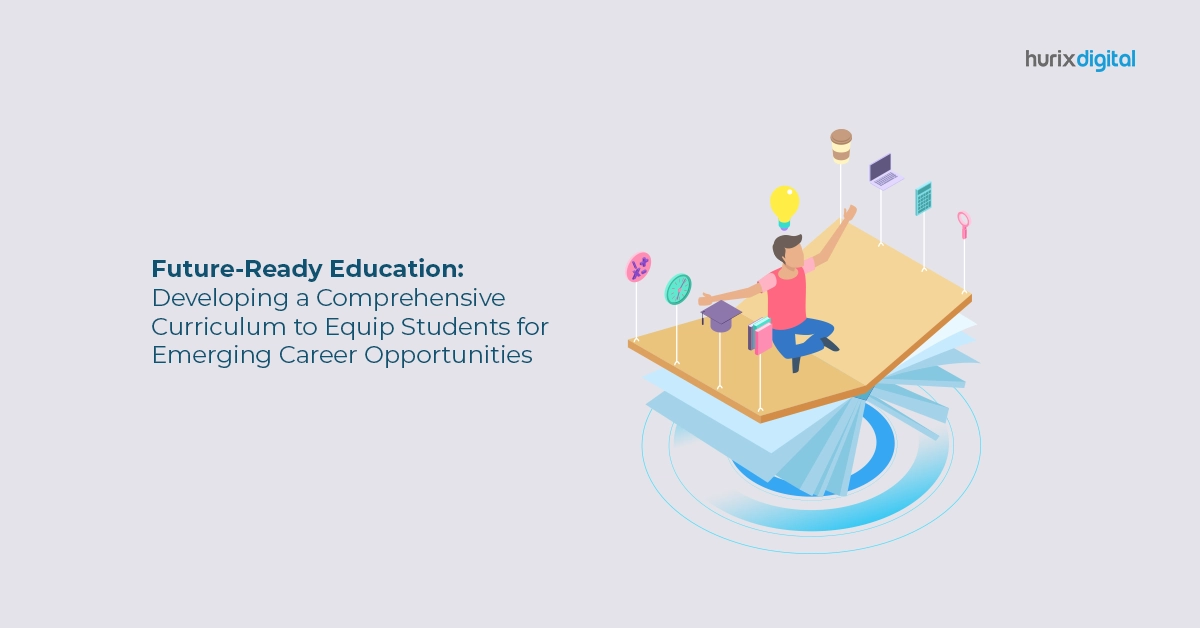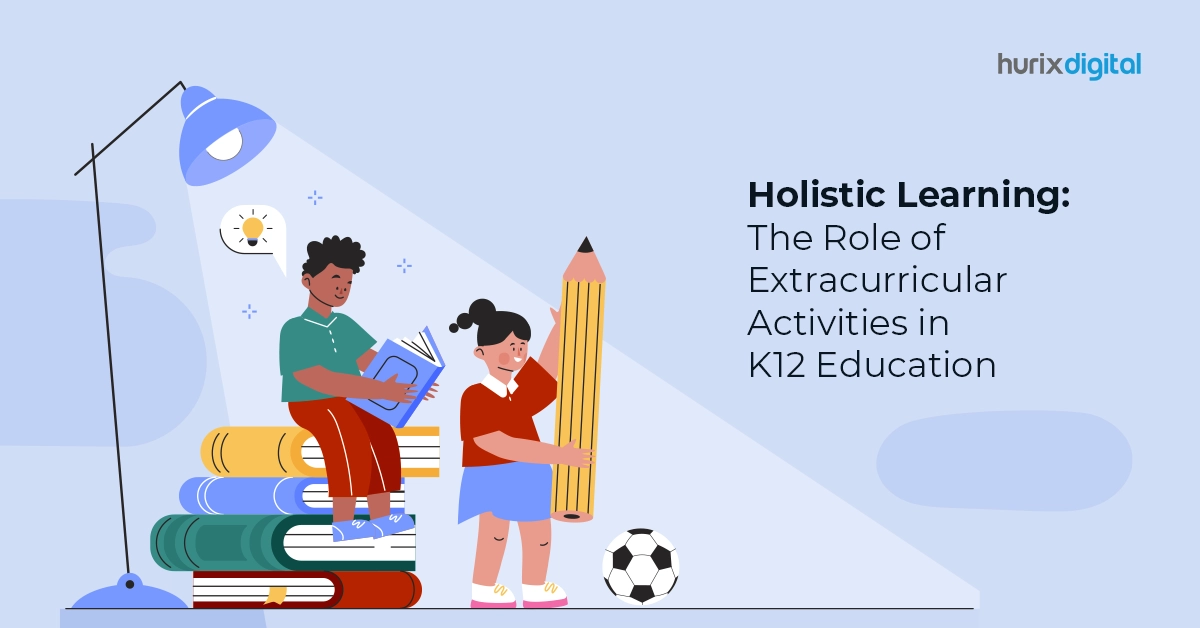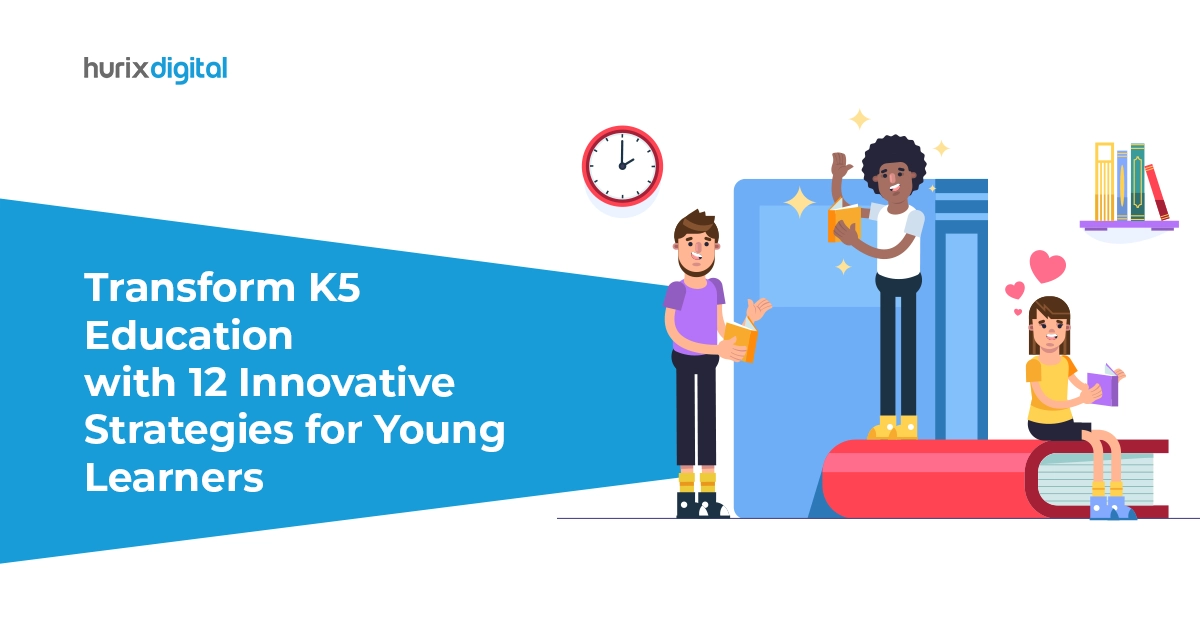
Transform K5 Education with 12 Innovative Strategies for Young Learners
Summary
This article highlights the latest trends in K5 education, which is evolving from traditional textbook learning to technologically-enhanced interactive systems. It outlines innovative teaching techniques that create vibrant classrooms, enhance critical thinking, and better prepare students for the future, embracing technology’s role in education.
K5 education is not the same anymore. Instead of relying on traditional paper-back book-based education, it has evolved into a technologically-enhanced and interactive learning system.
For students till grade 5, these are the formative years, where children must receive the best educational experience using engaging teaching methods that will keep their children actively involved. Fortunately, there are numerous resources available across various platforms to help identify the most effective educational strategies for young K5 learners.
This article highlights the latest trends and benefits in the K12 educational arena!
Table of Contents:
- Scope of K5 Education in 2024
- Top 12 Trends in K5 Education
- Why Adopt K5 Educational Trends – Benefits
- The Bottom Line
Scope of K5 Education in 2024
Before we start with the current trends in K5 education, we must understand how relevant it is to consider the technological evolution of K5 learning.
- The global value of EdTech in 2023 was more than $121 billion, which is expected to grow to over $347 billion by 2031.
- It has been predicted that AI in education will see a huge rise in investment, reaching over $21 billion by 2028.
- Artificial intelligence has been on the rise throughout 2023 as generative AI platforms and become more prevalent in the educational space. This revolution will prompt innovative modifications in school policies related to the adoption of rapidly developing technology.
Another significant trend in K5 education is the incorporation of collaborative learning opportunities. Modern classroom engagement now includes online tools that can make learning both enjoyable and accessible. Let us look at some of the trends in K5 education that are transforming education.
Also Read: 5 Effective AI Assessment Techniques for K5 Educators
Top 12 Trends in K5 Education
In recent years, various trends have transformed K5 education. As educators, it’s important to continually promote ways to improve teaching practices. Let us look at the top 12 strategies:
1. Child-Centered Education
This approach focuses on individualized learning experiences. This means devising learning methodologies and teaching pedagogies catering to each child’s interests, pace, strengths, weaknesses, preferences, and needs. Child-centered education can encourage autonomy, individual growth, and active participation.
2. STEM Education for Young Children
Schools are devising all strategies to enhance skills among children, especially in core subjects like science, technology, engineering, and mathematics. Integrating STEM education for young children leads to cohesive learning experiences, practical activities, and the development of critical thinking.
Children develop curiosity and a passion for learning using interactive content like graphs, diagrams, simulations, practical solutions, infographics, video/audio, and other multimedia-rich content.
3. Social-Emotional Learning in K5
Social-emotional learning in K5 is all about empowering students mentally and emotionally. Educators must focus on building empathy and working on their emotion management.
Educational organizations must implement new programs to enhance self-regulation, overcome internal and external conflicts, be mentally strong, learn how to deal with failures and develop social-emotional competence. SEL creates a safer learning environment for young K5 learners.
4. Play-Based Learning
Teachers can now use gamified teaching tools and imaginative play to develop various kinds of skills in children. This includes language skills, social-emotional intelligence, and problem-solving abilities.
It is recommended to adopt game elements and microlearning strategies to help children learn by playing. Play-based learning also includes success in extracurricular activities and using digital gamified solutions to learn difficult concepts. It has been researched that game-based learning and microlearning are some of the biggest trends in EdTech today.
5. Project-Based Learning
Project-based learning involves children in case studies or collaborative projects, which enhances peer partnerships and engages them in global challenges. It encourages critical thinking and teamwork and makes learning a shared experience for all.
6. Experiential Education
In this approach, education revolves around resolving real-world problems, gaining hands-on experiences on various complex topics, and exploring a multitude of real-world applications.
Teachers must integrate real-world experiences into lessons and help students connect classroom knowledge to real-world applications. Experiential education in K5 learning makes learning more meaningful and exciting.
7. Use of Interactive Whiteboards
Enhance learning with smart boards that allow for interactive multimedia presentations. These tools facilitate group work, interactive learning, and more engaging lessons.
8. Technology-Aided Learning
Technology-aided learning includes:
- Using digital textbook platforms for informative content, eBooks, Open Educational Resources, eReaders, and eTextbooks.
- Provide immersive learning experiences using Virtual Reality and Augmented Reality.
- Personalized learning using AI-powered learning methodologies is highly encouraged by analyzing student data and personalizing educational paths.
- Offer hands-on learning experiences that bring concepts to life with techniques like 3D Printing and Design Thinking. This will further encourage creativity and problem-solving through a flexible process.
- Cloud Computing is another strategy that will enable remote access to classes and materials and facilitate distance learning and collaboration.
9. Incorporate Blended Learning Systems
Blended learning has become a norm, especially post-pandemic, where educational institutions and students relate to the benefits of classroom and online pedagogical structures.
It combines traditional classroom methods with online resources and interactive activities. This approach allows for personalized learning, which extends beyond the classroom and offers students access to various forms of digital resources from home.
10. Inquiry-Based Learning
Inquiry-based learning is an active approach in which teachers ask rather than tell. The teacher acts as a facilitator who questions children, gives explanations, and guides them to explore topics independently. This method encourages critical thinking and emphasizes student-led research.
11. Flipped Classroom
The flipped classroom technique is the exact opposite of how it was taught in traditional classrooms. Students are expected to use eBooks, digital resources, and digital textbook platforms using computers, tablets, or even their smartphones.
They need to prepare for lectures using interactive tools like videos and participate in classroom activities that are based on forums, discussions, debates, and collaborative projects. This is a complete student-centered approach that allows them to learn and implement their know-how in modern ways.
12. Peer-to-Peer Teaching
Peer-to-peer teaching involves students teaching each other, which helps them share knowledge and enhance their understanding. By explaining concepts to peers, students improve their knowledge and improve communication skills.
This method also encourages confidence, independent study, and presentation skills as students choose topics of interest and take responsibility for teaching them accurately.
Why Adopt K5 Educational Trends – Benefits
Adopting Innovative K-5 educational trends and teaching methods offers several advantages for students:
1. Encourages Research
K5 teaching approaches inspire students to explore real-world scenarios, new concepts, digital learning resources, and working on multi-device platforms. They have a vast structure of multimedia and Open Resource Educational content that they can refer to. This helps them expand their knowledge and curiosity.
2. Improves Critical Thinking Skills
Creative K5 teaching and learning methods challenge students to think critically. Such trends enhance their problem-solving, comprehension, and analytical capabilities. This becomes a practical solution as children no longer need to rely solely on textbook answers.
3. Manages Information Overload
New teaching strategies break information into manageable bits, making it easier for students to grasp and retain basic concepts quickly.
4. Develops Soft Skills
Using diverse tools and engaging in individual or group projects helps students learn time management, task prioritization, communication, teamwork, and creativity.
5. Provides Better Insight into Student Understanding
Following K5 trends allows teachers to monitor students’ progress more effectively. This helps them to identify struggles and customize solutions to individual needs beyond just grades and exams.
6. Enhances Self-Evaluation
Students gain a clearer understanding of what they’ve learned and what they need to improve. This awareness encourages a deeper motivation to learn and a better grasp of the material’s importance.
7. Enlivens Classrooms
Modern K-12 trends and technologically advanced teaching methods create a more dynamic classroom environment. This encourages students to engage, speak up, and interact more actively.
8. Provides Structure Across Grade Levels
Following a modern educational format ensures consistent learning objectives and outcomes, integrating themes and building interdisciplinary connections. Teachers can adapt to various student needs and incorporate research-backed methods that lead to skill development and critical thinking.
9. Better Retention of Information
Hands-on learning, group collaboration, and active participation in innovative teaching techniques help students retain information more effectively. Connecting new knowledge to their experiences makes learning more meaningful and memorable.
Also Read: 7 Best Education Tech (EdTech) Companies for K12 Institutes in 2024
The Bottom Line
Innovative teaching techniques can transform the K5 classroom into a vibrant and engaging environment. It encourages active participation and a love for learning. By adopting these trends, educators can better prepare students for future success. Using such trends and tips, you can enhance children’s educational experience and help them stay involved.
With Hurix Digital, you can empower educators and K5 learners using interactive learning platforms and AI-driven tools that personalize learning experiences. Create engaging educational content and ensure that every child’s K5 education is an enriching journey that cultivates future talents.
Get in touch with us today.

Senior Vice President
A Business Development professional with >20 years of experience with strong capability to sell new solutions and develop new markets from scratch. New Market Entry Specialist with experience of working in two of the largest emerging markets – China & India. Also covered other key markets in APAC, US, EU & ME. Exceptional experience of conceptualizing, ideating and selling new learning technologies like VR AR, etc. across multiple industry verticals.
